When attempting to build muscle and strength, not all exercises are created equal. Some motions are better in their effectiveness, working multiple muscles at once and enabling you to progress toward your goals at a faster pace. Whether just starting to train or returning to it, this article deciphers some of the greatest muscle-building exercises, starting with the underwhelming but powerful barbell upright row, and how best and safest to perform them, even at home.
Why Strength Training Matters (Even to Beginners)
Strength training is not just for bodybuilders. It helps fat loss, builds bones, boosts energy and encourages better posture and functional movement in everyday life. For women between the ages of 35-60—the core of Papayya's audience—strength training matters even more for managing metabolism, hormones and protecting against injury as the body gets older.
At Papayya, our professionally certified trainers specialize in creating customized routines with exercises that smartly get the job done, not harder. Let's examine one such foundation movement—the barbell upright row—and expand to a full-body routine tailored for strength as well as tone.
1. Barbell Upright Row: A Compound Power Move
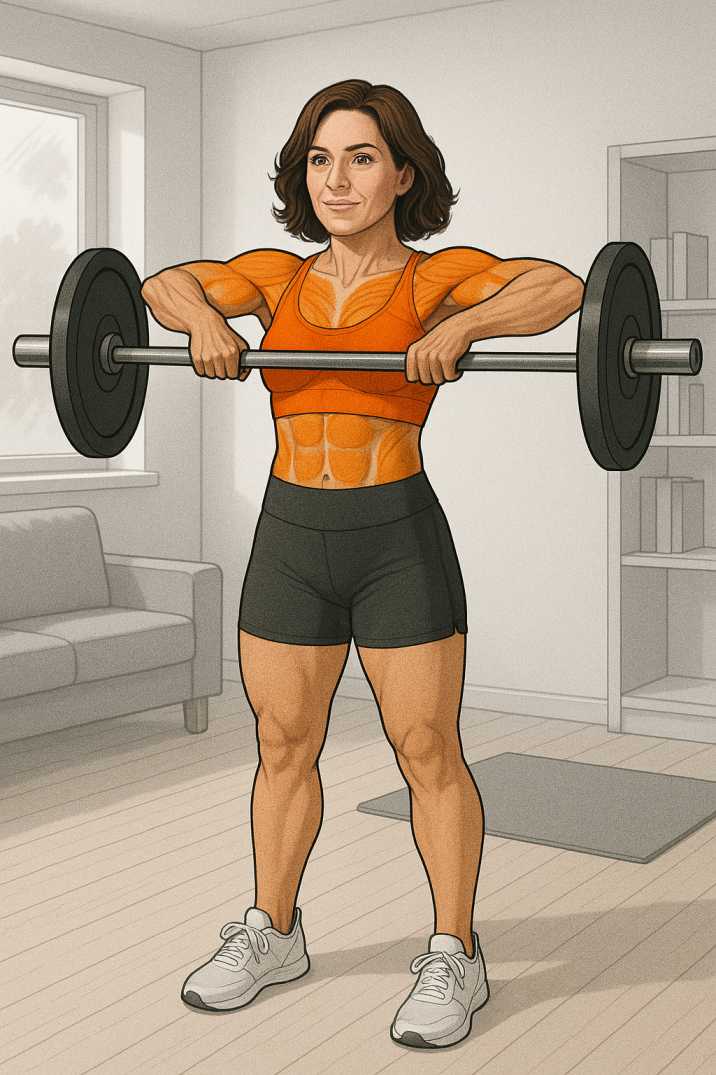
What It Is:
The barbell upright row engages the shoulders (deltoids), upper back (trapezius) and arms (biceps), enabling you to build that toned, powerful upper body.
How To Do It:
- Stand with feet shoulder-width apart.
- Pull the bar up to the collarbone, keeping the bar close to the body and elbows high.
- Pause, then slowly lower.
Trainer Tip: Don't go too high or too heavy, this loads the shoulder joints. If you're uncertain about your form, do it live with a Papayya trainer who adjusts your posture in real time through video.
Why It Works: The exercise builds both strength and size in your upper body. It's a great first introduction to pulling mechanics for novices—a buildup to more advanced lifts down the road.
2. Goblet Squat: Lower Body and Core All-In-One
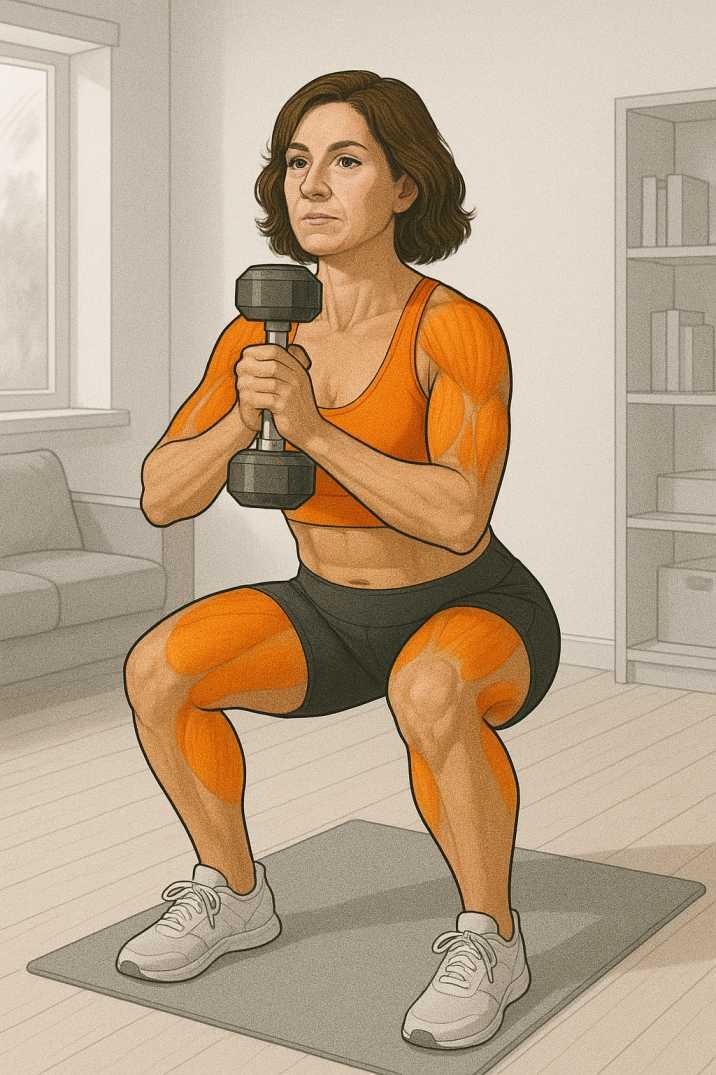
What It Is:
A simple yet effective full-body exercise that engages the quads, glutes, hamstrings, and core.
How To Do It:
- Hold a dumbbell or kettlebell at chest height in a goblet hold.
- Stand with shoulder-width feet, and lower down as low as feels comfortable.
- Make sure to keep the chest up, and push through the heels to stand up.
Why It Works: Goblet squats are more joint-friendly than barbell squats and also gentler on beginners. They engage your core and improve your posture while building up your legs.
Papayya Pro Tip: You can use no gym weights at all. Our trainers show you how to use water bottles or the cans you already have at home as weights while you do your home workout.
3. Push-Ups: Old-School, Still Gold
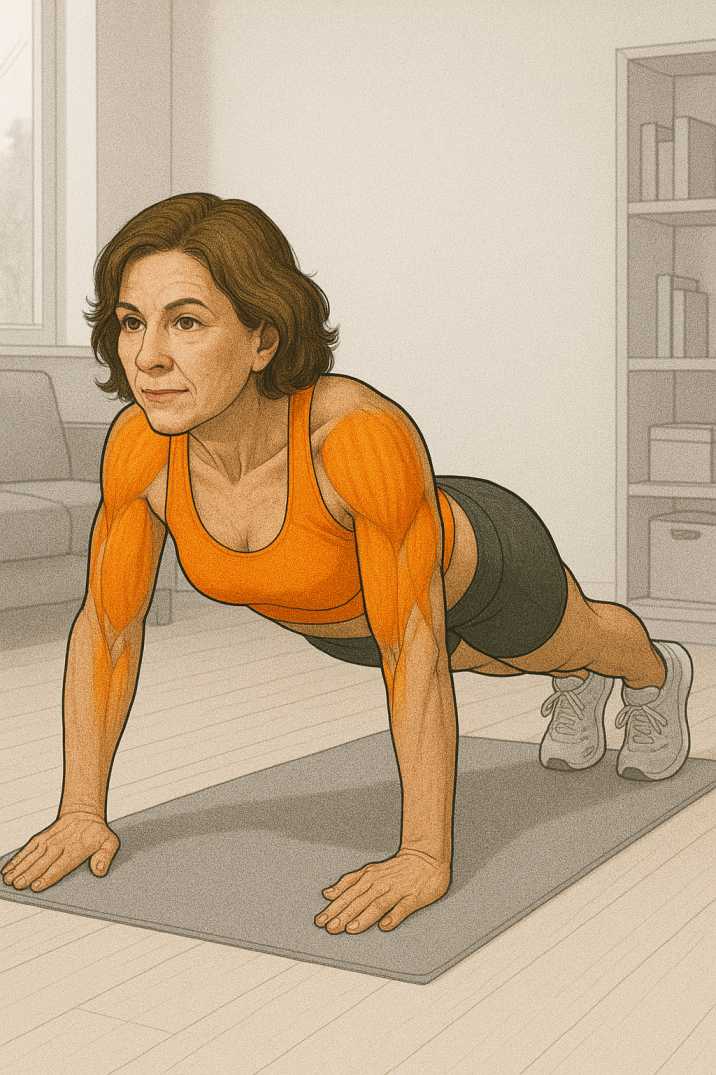
What It Is:
Push-ups develop the strength in your chest, shoulders, triceps, and core—all with zero equipment.
How To Do It:
- Start in a plank position with hands slightly wider than shoulders.
- Lower your chest down toward the floor, keeping your body in a straight line.
- Push back to the starting point.
Modification for Beginners: Start with knees on the floor or push-ups against the wall. Start building strength gradually.
Why It Works: Push-ups improve upper body and core strength, and they help tone the arms and shoulders. Plus, they’re a functional move: you’ll notice daily tasks like lifting or reaching get easier.
4. Romanian Deadlifts (RDLs): Stronger Hamstrings and Glutes
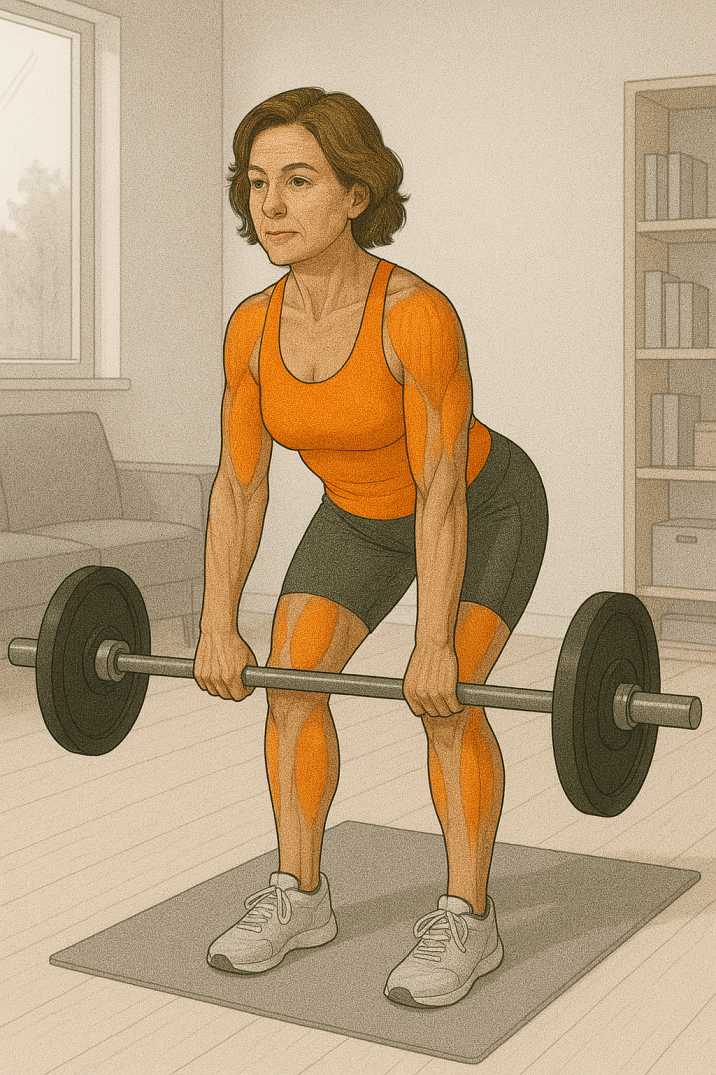
What It Is:
RDLs focus on the back of your legs (hamstrings and glutes) and also work your core and lower back.
How To Do It:
- Stand with dumbbells or a barbell in hand, arms in front of your thighs.
- Hinge at hips (not waist), letting weights descend down legs with flat back.
- Lower as far as your range, then stand.
Why It Works: RDLs are ideal for building strength without heavy stress. You don't need to go heavy: form is what counts.
Papayya Note: Hip-hinging can be tricky to get the hang of at first. That's where one-on-one coaching is helpful. Our trainers teach you how to get the hang of this movement in your own home using simple cues and form correction.
5. Dumbbell Shoulder Press: Strong Shoulders, Good Posture
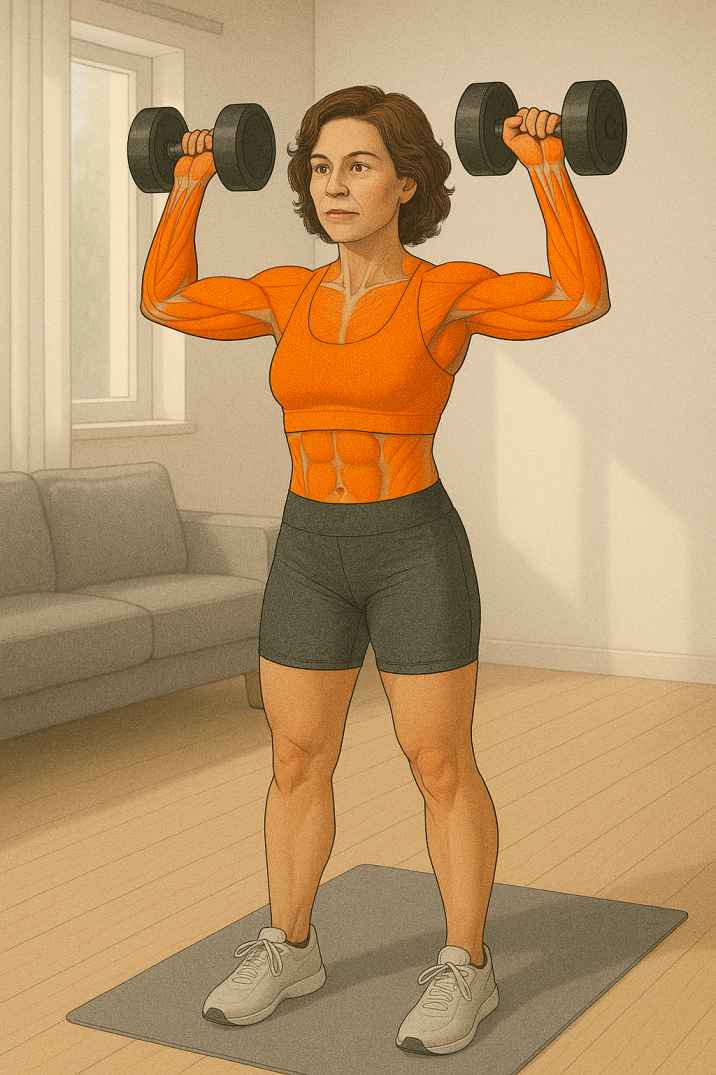
What It Is:
This exercise builds deltoid strength and helps with shoulder stability—essential for daily lifting tasks and overall balance.
How To Do It:
- Sit or stand holding a dumbbell in each hand at shoulder level.
- Press the weights overhead with arms extended.
- Lower back down in control.
Why It Works: Shoulder presses also help with arm definition and postural strength, much needed by those glued to a desk for most of the day.
Smart Training = Consistent Progress
Strength training is not about moving heavy or pushing through pain. It's about contracting muscles on purpose, gradually adding load or reps, and giving your body the right rest to recover and build.
With Papayya's live, 1-on-1 online training, the guessing game is removed from your workouts.
6. Glute Bridge: Activate Your Glutes
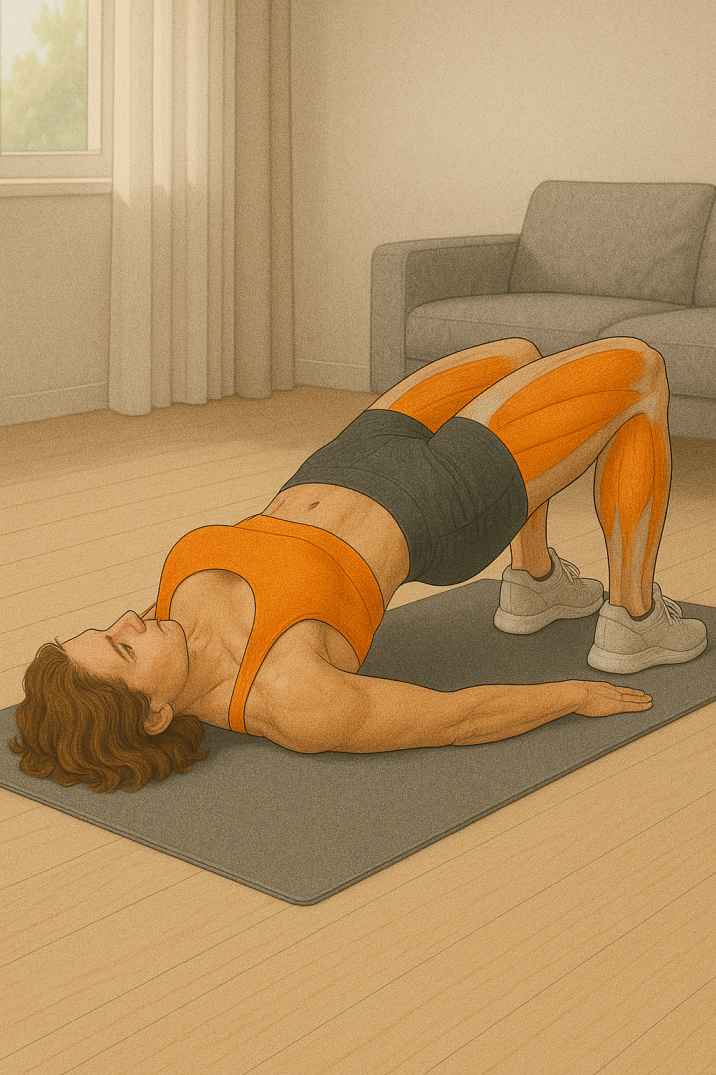
What It Is:
A low-impact movement that strengthens the glutes, hamstrings, and lower back and improves posture and hip movement.
How To Do It:
- Lay on the floor on your back with knees bent, feet flat.
- Push your feet into the ground and lift hips toward the ceiling.
- Squeeze glutes at the top, then lower back down slowly.
Why It Works: Glute bridge is especially wonderful for anyone who is sitting a lot during the day. It strengthens the posterior chain and promotes spine health.
Papayya Pro Tip: Want to make it harder? Include a dumbbell or loaded backpack around your waist. Our trainers can help you with safe progressions during your sessions.
7. Bent-Over Dumbbell Row: For a Strong Back and Arms

What It Is:
This exercise strengthens the muscles of your back (latissimus dorsi, rhomboids) and tightens up your arms, improving posture and grip strength.
How To Do It
- Stand shoulder-width apart with feet, hold dumbbells in each hand, slightly bend the hips and knees.
- Pull dumbbells towards your body, squeezing shoulder blades together.
- Lower with control.
Why It Works: Rows offset all the pushing motions (like push-ups) and serve to protect your shoulders from injury.
Home Hack: No dumbbells? Try water bottles or resistance bands—a trick that our Papayya trainers can teach you.
8. Forward Lunge: Total Leg and Core Builder
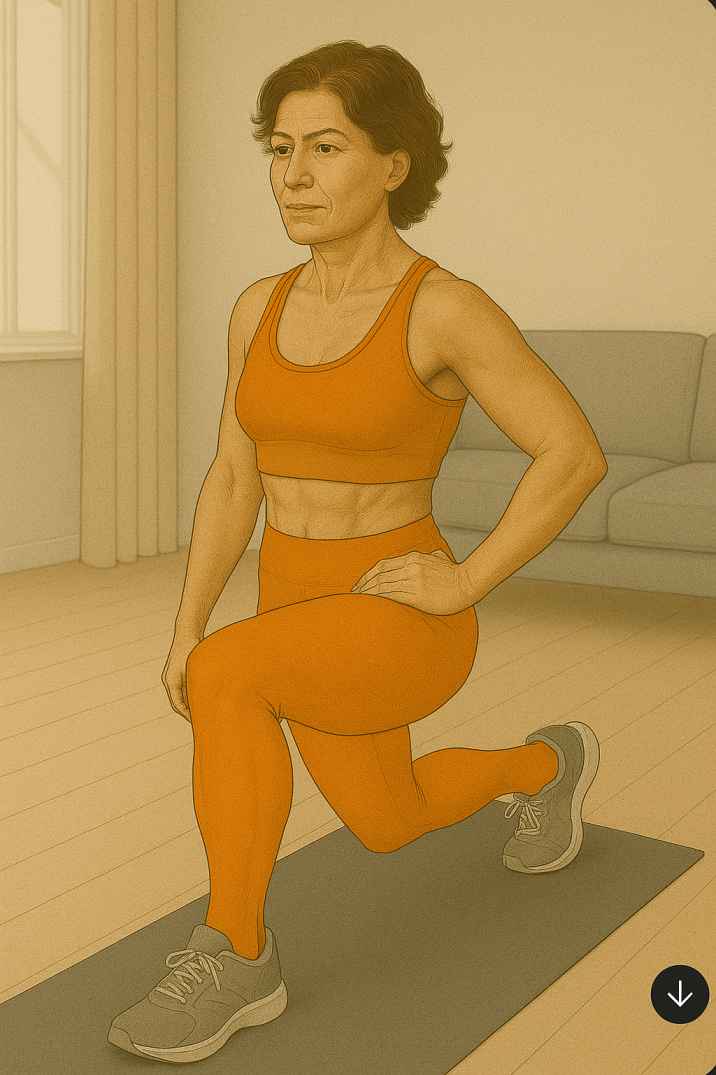
What It Is:
A dynamic exercise that engages your quads, glutes, and calves, as well as enhances balance.
How To Do It:
- Step one foot in front of the other and lower into a lunge with your torso kept upright.
- Push back to the beginning and switch sides.
- Repeat for several reps.
Why It Works: Lunges replicate everyday movements and develop functional strength. They also uncover and correct muscle imbalances between your right and left sides.
Trainer Tip: Start with stationary lunges if you have trust issues, and move up to walking lunges.
9. Plank Hold: Stronger Core = Better Everything

What It Is:
Planks are an isometric core exercise—no movement, just potent muscle activation.
How To Do It:
- Get into a forearm or full push-up position.
- Position your back flat, core tight, and hips level.
- Hold for as long as you can sustain good form.
Why It Works: A strong core assists with anything from grocery lifting to jogging or dancing. Planks also avoid injury.
Progression: Once you've got the plank mastered, try side planks or add arm/leg lifts to challenge stability.
10. Wall Sit:
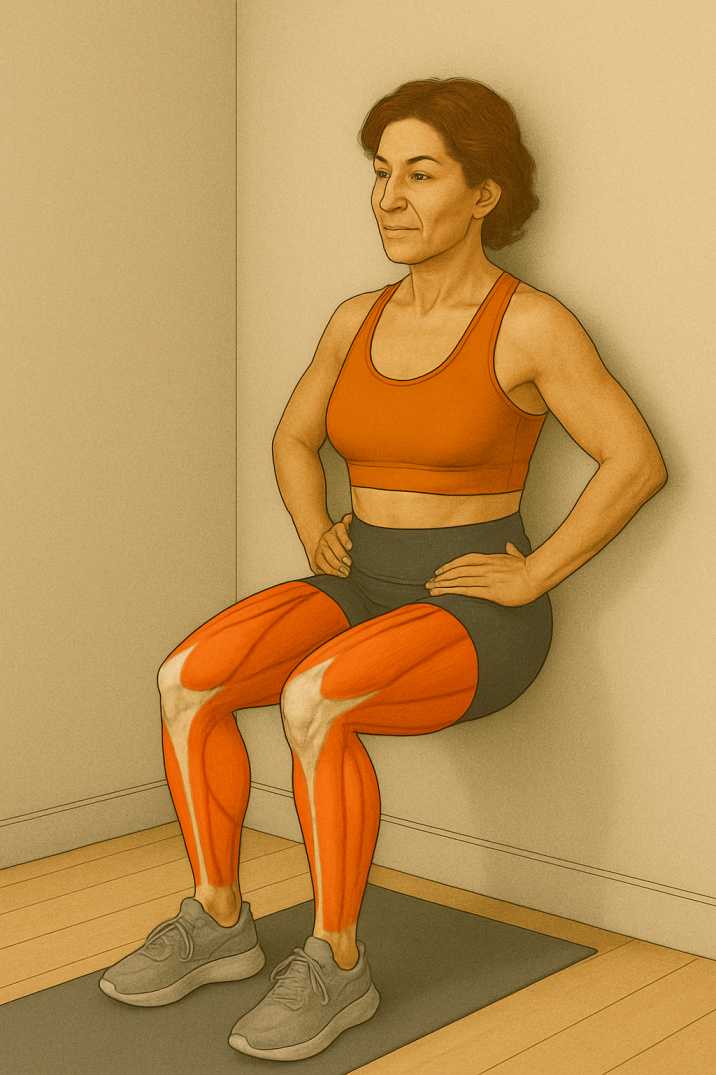
What It Is:
Wall sits are an isometric lower-body exercise—no reps, just intense muscle engagement for your thighs and glutes.
How To Do It:
- Stand with your back against a wall and slide down until your knees are at a 90-degree angle, as if sitting on an invisible chair.
- Keep your back flat against the wall, feet shoulder-width apart.
- Hold the position.
Why It Works: Wall sits build strength and endurance in your quads, hamstrings, and glutes—great for everyday activities like climbing stairs, squatting, or playing sports.
Progression: To level up, try holding a weight in your lap, lifting one heel at a time or adding short pulses at the bottom of the hold.
Nutrition and Recovery: The Other Half of Strength
Exercise breaks down your muscles—diet and rest build them stronger. To achieve noticeable outcomes, consistency in both these areas is the solution.
Nutrition Recovery Tips:
- Protein: 15–30g after workouts to support muscle repair.
- Carbs: Replenish energy with complex carbs like whole grains or fruit.
- Hydration: Drink water and consider electrolytes if you sweat a lot.
- Anti-inflammatory foods: Add berries, greens, or omega-3s to reduce soreness.
- Timing: Eat within 30–60 minutes post-exercise for best results.
- Sleep: Combine good nutrition with quality sleep for full recovery.
Rest Days: Muscle increases in rest, not training. Make sure to have at least 1–2 rest days a week.
- Sleep: Make an effort to get 7–9 hours each night to support hormone regulation and repair of the muscles.
- Stretching: Stretching after training sessions and active recovery sessions (like Papayya's mobility sessions) keep you flexible and minimize pain.
How Papayya Makes Muscle Building Easy
We understand that everybody is different. That's why Papayya's training is personalized, in-the-moment, and always evidence-based. Whether you want to:
- Strengthen your core post-baby
- Tone arms and legs over 40
- Increase metabolism with lean muscle
- Just move with more energy and confidence
You don't require a gym. You don't require hours. You require intelligent, consistent movement.
✔ Train anywhere (even in your living room)
✔ Get instant feedback from certified trainers
✔ Train with little equipment (or even no equipment at all)
✔ Track your progress with each rep
Start Where You Are and Get Stronger Each Week
There is not a "perfect" fitness level to begin with. You can begin with 30 minute workouts and still see results. You can do upright rows with resistance bands.
Papayya was designed to help you do just that—with care, support and guidance that gets you and your life.
Sign Up for Papayya for Free Today
We’re offering a 14-day free trial with a certified personal trainer—no equipment, no credit card required. Just movement that fits you
In Summary: 10 Best Strength Exercises to Build Muscle at Home
- Barbell Upright Row
- Goblet Squat
- Push-Ups
- Romanian Deadlifts
- Dumbbell Shoulder Press
- Glute Bridge
- Bent-Over Row
- Forward Lunge
- Plank Hold
- Wall Sit
Consistency + Proper Form + Recovery = Long-term Results.
Join a Papayya coach and get stronger on your terms.
References
- Healthline. (2022). How to Do an Upright Row the Right Way.
- BarBend. (2023). Build Beefy Traps and Shoulders With the Upright Row.
- Wikipedia. (2024). Upright Row.
- Mayo Clinic. (2023). Strength training: Get stronger, leaner, healthier.
- Harvard T.H. Chan School of Public Health. (2022). Strength Training and Health.
- Nebraska Medicine. (2023). Why Strength Training Is Critical for Women’s Health.
- University Hospitals. (2023). The Unique Benefits of Strength Training for Women.
- NPR. (2022). Strength training tied to lower risk of early death.
- Vogue India. (2023). Strength training is more essential for women than you think.
.svg)

.webp)
.webp)
 FACEBOOK
FACEBOOK
